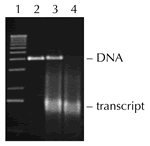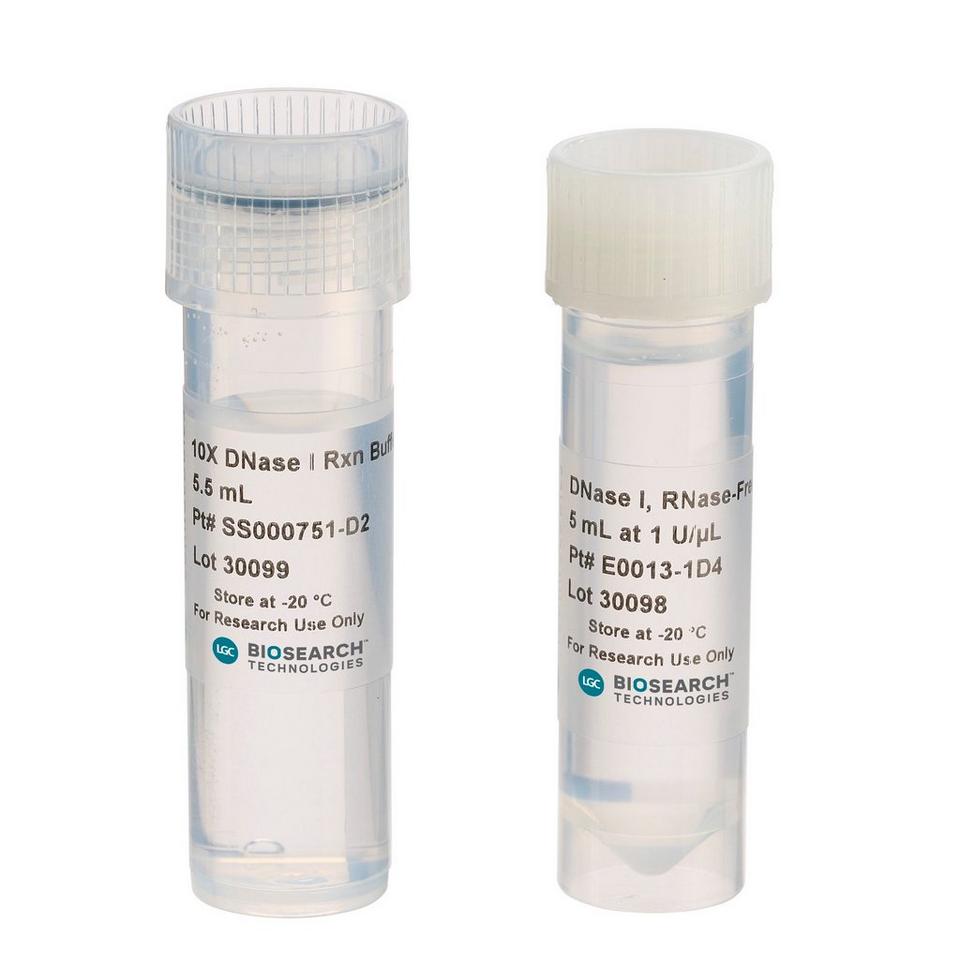RNase-Free DNase I (bovine pancreas) is an endonuclease useful in removing DNA that might interfere with the characterisation, manipulation, or use of RNA, or for any application requiring highly purified DNase I. It efficiently hydrolyses double- and single-stranded DNA to a mixture of short oligo- and mononucleotides.
 |
Figure 1. DNA removal from in vitro transcription reactions using RNase-Free DNase I. A linearized DNA template was transcribed using T7 RNA polymerase according to standard in vitro transcription conditions. Lane 1, kb ladder; Lane 2, DNA control; Lane 3, transcription mixture; Lane 4, transcription mixture treated with 1 MBU of RNase-Free DNase I for 15 minutes at 37°C. 
|
Unit Definition
Using the standard 50µl assay volume, one Molecular Biology Unit (MBU) digests 1µg of pUC79 DNA to oligodeoxynucleotides in 10 minutes at 37°C in 33 mM Tris-acetate, pH 7.8, 66mM potassium acetate, 10mM magnesium acetate, and 0.5mM DTT 2mM CaCl2.
Storage Buffer
50% glycerol containing 10mM Tris-HCl, pH 7.5, 10mM CaCl2, and 10mM MgCl2.
Quality Control
No degradation of 1µg of a synthetic RNA transcript is detected by agarose gel electrophoresis following incubation with 10U of RNase-Free DNase I at 37°C for 1 hour.
If you cannot find the answer to your problem then please contact us or telephone +44 (0)1954 210 200